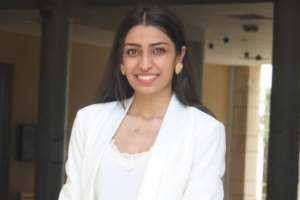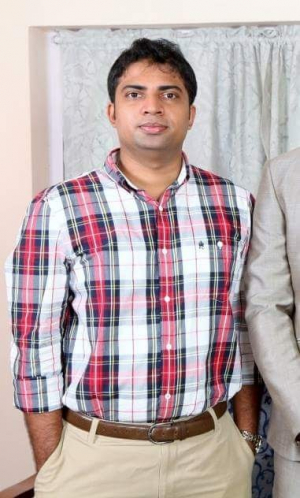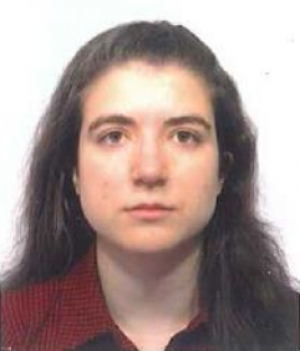Super User
Cognitive Self-Aware Ego-Things
.jpg)
The course aims at providing PhD Candidates knowledge on basic state of the art and advanced theories/techniques for learning from multisensory signals and data Bayesian models for jointly predicting, processing, filtering and interpreting observed interactions.
Such models will be shown to enhance the functionalities of embodied smart autonomous systems like cars, radios, drones, robots, buildings, by providing such agents with a self-awareness information layer. Networks of self-aware autonomous systems interacting in smart cognitive environment will be also targeted as examples carried on in the course. From a methodological viewpoint, this module aims at identifying and describing methodologies and techniques for defining a common probabilistic framework suitable for:
- integrating contextual signals synchronously provided by multisensorial exo and proprio receptive sensors of autonomous systems by using Data Fusion paradigms and techniques;
- learning from experiences behavioural and causal self-awareness models allowing an autonomous system to describe the world through a vocabulary of normal locally stationary experiences.
- showing how each model learned from experience can describe through probabilistic stationary rules dynamic perception, planning and actuation by means of collected external and internal observations.
Applications will be targeted of described techniques related to a couple of main case studies together with additional examples:
- self-awareness in autonomous ground and aerial vehicles and smart infrastructures (e.g., Buildings, dynamic radio spectrum)
- interactions in telecommunications scenarios like cognitive radio and internet of things.
Program:
- Bio-inspired Cognitive Dynamic System models: Damasio, Haykin and Friston models
- Data Fusion methodologies and techniques for integrating multisensorial contextual data Data Fusion models. JDL model and its extensions: signals, objects, situations, threats, processes and cognitive refinement.
- Techniques for non-parametric self-awareness interaction-based predictive/generative/classification models.
- Dynamic Bayesian Networks as representation and inference tool for self-awareness
- Review of Bayesian multisensor state estimation and data association techniques:
- Continuous and discrete state estimation techniques: from Kalman filter to Particle Filters, Hidden Markov Models.
- Switching models. Markov Jump and Rao Blackwellized filters.
- Relationships with Generative Adversarial Networks, Variational Autoencoders.
- Supervised and Unsupervised Learning of DBNs models from multisensorial agent exo and proprioreceptive sequences:
- Gaussian Processes,
- Self Organizing Maps, Growing Neural Gas.
- Incremental learning: Dirichlet processes, DBN error based new model creation
- Applications and case studies:
- Cognitive radio and Internet of Things Physical anti-jammer security Self-awareness in autonomous ground and aerial vehicles
- Cognitive safety and physical security systems (smart patrolling in cooperative environments, preventive automotive vehicles, smart buildings, etc.)
- The course includes two laboratory lessons. The objective of these lessons is to get familiar with the application of generative models to low-dimensional data. We will explore how Dynamic Bayesian Networks (DBNs) can be utilized for anomaly detection considering single objects, and how interactions among multiple objects can be modeled using coupled DBNs. This allows participants to connect concepts learned during theoretical lessons with practical implementation capabilities.
Enrollment form (it is mandatory to enroll through this form before 03/07/2023)

Tommaso Apicella
Tommaso Apicella obtained the Master's degree in Electronic Engineering in 2019 from Genoa University, Italy. He is pursuing a PhD in Interactive and Cognitive Environments at the Department of Electrical, Electronic, Telecommunications Engineering and Naval Architecture (DITEN) of the University of Genoa.
His main research areas include: Machine Learning and Pattern Recognition for Embedded Devices.
Nour Badini
Nour Badini was born in Lebanon in 1997. I got a Masters degree in Computer and Communication Engineering at Lebanese University with a Thesis concerning a novel design of a Multi-Band Antenna for 5G Applications in 2019.
Nobel John William
Nobel received his B.E. degree in Electronic and Communications Engineering from Anna University, India in 2008 and M.Sc. degree in Telecommunications from University of Valencia, Spain in 2012. His experience spans the likes of premier telecommunication OEMs and energy consulting companies in the capacity of an engineer and with his latest industry assignment being Project Manager (reporting to Chairman). Nobel has also worked as Faculty in academia at a leading Business school in India. His research interests include Machine Learning, cognitive Radios, Internet of Things, self-awareness, Dynamic Bayesian Networks and Graph neural networks. He is currently a PhD scholar under the JD-ICE programme.
Giulia Slavic
Giulia obtained her B.S. in Electronics and Information Technologies Engineering in 2017 and her M.S. in Internet and Multimedia Engineering in 2020 at the University of Genova, Italy. She is currently a Ph.D. candidate at the University of Genova in the JD ICE program. Her research interests include autonomous vehicles, self-awareness, and the use of Deep Learning and signal processing algorithms for prediction and anomaly detection in sequential, multisensory data.
Fahad Ahmed
Fahad completed his Bachelors of Science in Computer Science & Software Engineering in 2014 and his Masters of Science in Computer Science (Summa Cum Laude) in 2016 from the American Int. University-Bangladesh (AIUB). He worked as a tertiary education teacher for 4 years and then as Assistant Professor at AIUB, prior to commencing his PhD with the JD-ICE program. His current research interests span across Affective Computing, Machine Learning, Computational Modelling, Gamification and Data Analytics.
Fouad Sakr
Fouad received his Bachelor of Science and Master of Science in Computer and Communication Engineering from the Lebanese International University in 2017 and 2019, respectively. His current research interests involve Artificial Intelligence, Embedded Machine/Deep Learning, Edge Computing, and Cloud Computing.
Design Patterns for Autonomous Systems

Agile development is the ability to develop software quickly, in the face of rapidly changing requirements. By following agile principles and practices, a software development team is encouraged to evolve into a self-organizing and cross-functional group, thus improving the quality of the code, the quality of deliveries and in the end the customer satisfaction. In general, agile concepts promote adaptive planning, evolutionary development and delivery, a time-boxed iterative approach, and encourage rapid and flexible response to change. Design principles described during the course will help to keep the software flexible and maintainable, while design patterns will represent some practical tools to balance those principles for specific problems. Agile principles, patterns and practices will be described and then applied through several different case studies.
Inspiring principles for agile framework were introduced through the Agile Manifesto in 2001, focusing on individuals and interactions within a software development team, working software from the early stages of the development process, open and continuous collaboration with the customers and the ability to quickly respond to requests for changes in requirements even late in development.
There exist several processes trying to put in practice those inspiring principles, being the eXtreme Programming (XP) one of the most famous and widely adopted. XP concentrates on short development cycles, acceptance tests and test-driven development. Simple design is usually favored in contrast of needless complexity and overdesign.
Six fundamental principles of software engineering are described in details that help developers eliminate the symptoms of poor design. The Single-Responsibility Principle (SRP), the Open/Closed Principle (OCP), the Liskov Substitution Principle (LSP), the Dependency-Inversion Principle (DIP) and the Interface Segregation Principle (ISP) are the hard-won product of decades of experience in software engineering. They are not the product of a single mind but represent the integration of the thoughts and writings of a large number of software developers and researchers. Although they are presented here as principles of object-oriented design, they are really special cases of long-standing principles of software engineering.
Program:
- Agile manifesto and practices
- Overview of Extreme Programming
- Software development planning
- Test-driven development
- Refactoring
- Principles of agile design
- Single-Responsibility Principle (SRP)
- Open/Closed Principle (OCP)
- Liskov Substitution Principle (LSP)
- Dependency-Inversion Principle (DIP)
- Interface Segregation Principle (ISP)
- UML overview
- Object diagrams
- Use cases
- Sequence diagrams
- Class diagrams
- Design patterns
- Template method and Strategy
- Facade and Mediator
- Singleton and Monostate
- Null Object
- Factory
- Observer
- Proxy and Gateway
- Visitor
- State
Bibliography:
- Course notes
Further reading:
- "Manifesto for Agile Software Development", Agile Alliance, 2001, webpage: http://agilemanifesto.org/
- Robert C. Martin and Micah Martin. 2006. Agile Principles, Patterns, and Practices in C# (Robert C. Martin). Prentice Hall PTR, Upper Saddle River, NJ, USA.
- Erich Gamma, Richard Helm, Ralph Johnson, and John Vlissides. 1995. Design Patterns: Elements of Reusable Object-Oriented Software. Addison-Wesley Longman Publishing Co., Inc., Boston, MA, USA.
- Robert C. Martin. 2008. Clean Code: A Handbook of Agile Software Craftsmanship (1 ed.). Prentice Hall PTR, Upper Saddle River, NJ, USA.
- Kent Beck, extreme Programming explained: Embrace change Addison-Wesley, 2000.
Enrollment form (it is mandatory to enroll through this form before 8/9/2020)
Representation and learning of Dynamic Bayesian Interaction Models from Multisensor Data for Cognitive Self-Aware Ego-Things
The course aims at providing PhD Candidates knowledge on basic state of the art and advanced theories/techniques for learning from multisensory signals and data Bayesian models for jointly predicting, processing, filtering and interpreting observed interactions.
Such models will be shown to enhance the functionalities of embodied smart autonomous systems like cars, radios, drones, robots, buildings. by providing such agents of a self-awareness information layer. Networks of self-aware autonomous systems interacting in smart cognitive environment will be also targeted as examples carried on in the course. From a methodological viewpoint, this module aims at identifying and describing methodologies and techniques for defining a common probabilistic framework suitable for:
- integrating contextual signals synchronously provided by multisensorial exo and proprio receptive sensors of autonomous systems by using Data Fusion paradigms and techniques;
- learning from experiences behavioural and causal self-awareness models allowing an autonomous system to describe the world through a vocabulary of normal locally stationary experiences.
- showing how each model learned from experience can describe through probabilistic stationary rules dynamic perception, planning and actuation by means of collected external and internal observations.
Applications will be targeted of described techniques related to a couple of main case studies together with additional examples:
- self-awareness in autonomous ground and aerial vehicles and smart infrastructures (e.g. Buildings, dynamic radio spectrum)
- interactions in telecommunications scenarios like cognitive radio and internet of things.
Program:
- Bio-inspired Cognitive Dynamic System models: Damasio, Haykin and Friston models
- Data Fusion methodologies and techniques for integrating multisensorial contextual data Data Fusion models. JDL model and its extensions: signals, objects, situations, threats, processes and cognitive refinement.
- Techniques for non-parametric self-awareness interaction-based predictive/generative /classification models.
- Dynamic Bayesian Networks as representation and inference tool for self-awareness
- Review of Bayesian multisensor state estimation and data association techniques:
- Continuous and discrete state estimation techniques: from Kalman filter to Particle Filters, Hidden Markov Models.
- Switching models. Markov Jump and Rao Blackwellized filters.
- Relationships with Generative Adversarial Networks, Variational Autoencoders.
- Supervised and Unsupervised Learning of DBNs models from multisensorial agent exo and proprioreceptive sequences:
- Gaussian Processes,
- Self Organizing Maps, Growing Neural Gas.
- Incremental learning: Dirichlet processes, DBN error based new model creation
- Applications and case studies:
- Cognitive radio and Internet of Things Physical anti-jammer security Self-awareness in autonomous ground and aerial vehicles
- Cognitive safety and physical security systems (smart patrolling in cooperative environments, preventive automotive vehicles, smart buildings, etc.)






